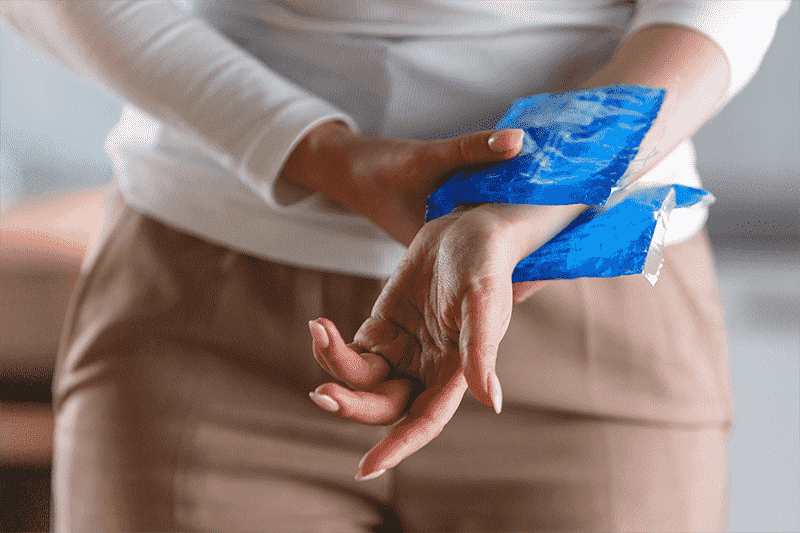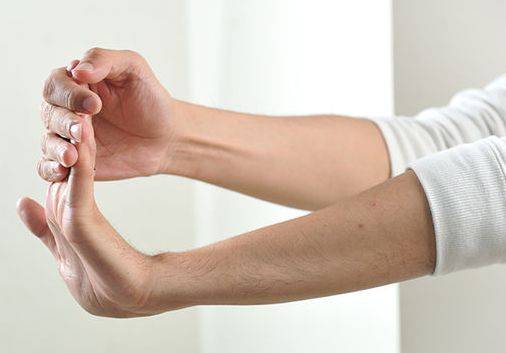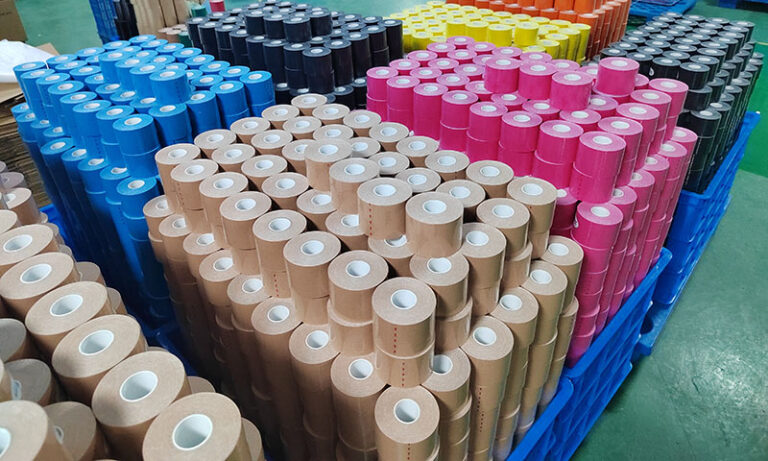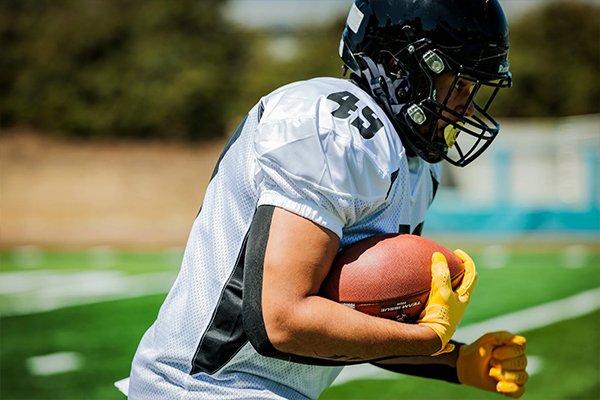Here are the steps to strap a thumb with kinesiology tape
1.Cut a piece of kinesiology tape thumb long enough to wrap around your thumb comfortably.
2. Round the corners of the tape to prevent the edges from peeling up.
3. Tear the backing paper in the middle of the tape, leaving the ends of the tape intact.
4. Place the middle of the kinesiology tape thumb on the back of your thumb, just below the nail.
5. Wrap one end of the tape around the base of your thumb, stretching the tape as you go.
6. Wrap the other end of the tape around the base of your thumb, overlapping the first strip slightly.
7. Rub the kinesiology tape thumb to activate the adhesive and ensure it sticks firmly to your skin.
8. Repeat steps 5-7 with a second strip of tape, wrapping it in the opposite direction around your thumb.
9. If necessary, add additional strips of tape to provide additional support and stability.

When wrapping the tape, be sure to avoid wrapping it too tightly, as this can restrict circulation and cause discomfort. You should also avoid wrapping the tape too loosely, as it will not provide adequate support. Experiment with different amounts of tension until you find the right amount of support and comfort. If you experience any pain or discomfort while wearing the tape, remove it immediately and consult a medical professional.
How do you rehab a sore thumb?
The specific rehabilitation process for a sore thumb will depend on the cause of the soreness and the severity of the injury.
- Rest: It’s important to rest the affected thumb to allow it to heal. Avoid activities that aggravate the soreness or cause pain.
2. Ice: Applying ice to the affected area can help reduce swelling and pain. Apply an ice pack for 15-20 minutes at a time, several times a day.

3. Compression: Wrap a compression bandage around the sore thumb to help reduce swelling and provide support.
4. Elevation: Elevate the sore thumb above the level of your heart to help reduce swelling and improve circulation.
5. Strengthening exercises: Once the soreness has reduced, begin performing gentle thumb strengthening exercises to help restore strength and mobility. These exercises may include squeezing a soft ball or gripping exercises.

6. Range of motion exercises: Perform a gentle range of motion exercises to help improve flexibility and mobility of the thumb.
7. Stretching exercises: Perform gentle stretching exercises to help prevent stiffness and improve flexibility.

It’s important to consult with a medical professional before beginning any rehabilitation program for a sore thumb. They can help diagnose the cause of the soreness and provide specific recommendations for rehabilitating the injury.
Can a sprained thumb heal by itself?
Yes, a sprained thumb can heal by itself. A sprain is a stretching or tearing of the ligaments that connect the bones in a joint, and it is a common injury that can occur in the thumb. In many cases, a mild to moderate sprain can heal on its own with time and proper care.
During the healing process, it is important to rest the affected thumb and avoid activities that may cause further damage. Applying ice to the affected area and wrapping it with a compression bandage can help reduce swelling and provide support. Over-the-counter pain medication can also help manage pain and discomfort.
As the sprain heals, it is important to gradually reintroduce activities that use the thumb and to perform gentle exercises to help restore strength and flexibility. However, it’s important to avoid pushing yourself too hard and causing further damage.
It’s important to note that more severe sprains may require medical attention and may take longer to heal. If the sprained thumb is severely swollen or painful, or if there is limited mobility or signs of instability, it is important to seek medical attention for proper diagnosis and treatment.
What kinesiology tape thumb is best for the thumb?

- When it comes to taping a thumb, several types of tape can be used, but kinesiology tape thumb is often considered the best option.
2. Flexibility: kinesiology tape thumb is made of stretchy, breathable fabric that moves with the body. This makes it a good choice for taping the thumb, which requires a full range of motion to perform many everyday tasks.
3. Comfort: kinesiology tape thumb is designed to be comfortable to wear for extended periods. It is breathable and moisture-wicking, which can help prevent skin irritation.
4. Adhesive: kinesiology tape thumb is designed to adhere well to the skin without causing irritation or leaving a sticky residue. It can be applied and removed easily without causing discomfort.
Other types of tape that may be used for taping the thumb include athletic tape and cohesive bandages. These are generally less flexible and may restrict movement more than kinesiology tape, but they can provide additional support and stability in some cases. It’s important to consult with a medical professional to determine the best type of tape for your specific situation.
how to remove kinesiology tape thumb residue
- Gently peel off as much of the tape as possible. Try to pull it off in the direction of hair growth to minimize discomfort.
2. If the kinesiology tape thumb is still sticking to your skin, apply a small amount of oil (such as olive oil or coconut oil) to the affected area. Rub the oil gently into the residue and let it sit for a few minutes.
3. Use a soft cloth or paper towel to gently rub the area in a circular motion, using the oil to help loosen the adhesive.
4. If the residue is still not coming off, try using rubbing alcohol or a commercial adhesive remover. Apply a small amount to the affected area and rub gently to remove the residue.
5. Once the residue has been removed, wash the affected area with soap and warm water to remove any remaining oil or adhesive remover.
6. Apply a moisturizer or aloe vera gel to the affected area to soothe the skin.
It’s important to avoid scrubbing the affected area too vigorously, as this can cause skin irritation. If you experience any pain or discomfort while removing the kinesiology tape residue, stop and consult a medical professional.



